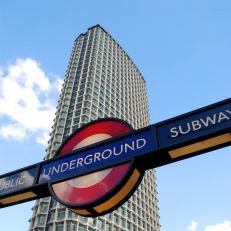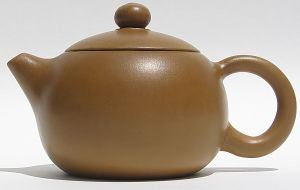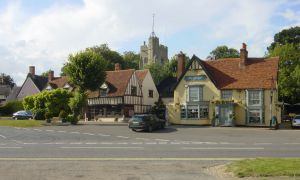Travel Tips
Off the Brochure Travel Guide: London, England
 From Big Ben, to bangers and mash, to high tea and the royal family, there’s so much going on in London that it’s no wonder more than 26 million travelers made overnight visits last year.
From Big Ben, to bangers and mash, to high tea and the royal family, there’s so much going on in London that it’s no wonder more than 26 million travelers made overnight visits last year.
London boasts four World Heritage sites, 17 national museums and galleries with free entrance, and countless pubs, where the likes of Charles Dickens, Samuel Johnson, and William Shakespeare enjoyed plentiful libations.
You could spend a lifetime “across the pond” and still not capture it all, but on your next visit, make sure to step off the beaten path into the alleys, villages, and less-touristed sections of London.
Gardens
London is peppered with all kinds of public gardens, but if you want a peek into the more hidden, private gardens, join the Loire Valley Wines Open Garden Squares Weekend. Once a year, several private garden squares and other gardens welcome visitors. Along with this rare opportunity, several special events occur at some of the gardens, including a tasting of the famed Loire Valley wines. One garden often included in the tour is owned by the British Medical Association. Located behind the south wing of the BMA House, the Council Garden has a variety of medicinal plants, and one of the garden’s walls has a plaque surrounded by foundation stones from Dickens’ house. The most recent Open Garden Squares Weekend took place this past June, during which more than 130 secret gardens were opened for visitors; the next weekend is scheduled for June 7-8, 2008. +44 20 7839 3969, https://www.opensquares.org
For an urban respite and great views of London’s skyline, visit The Roof Gardens. One-and-a-half acres of themed gardens rest on a roof over 100 feet above Kensington High Street. The Roof Gardens comprise of three gardens: The formal Spanish Garden has a Court of Fountains, the Tudor Garden has a walkway made of traditional stones, and the Woodland Garden has a stream. You might be surprised to see non-native birds like flamingos and pintail ducks perched on this rooftop. Once you’ve wandered around the garden, stop by the Babylon restaurant and The Club nightclub, which also share the roof. Guests are welcome to visit the gardens, but make sure to check the availability as the gardens often host private events. +44 20 7937 7994, https://www.roofgardens.com
For an unexpected garden, visit a cemetery. The Kensal Green is one of London’s oldest public burial grounds, and the cemetery’s 75 acres are managed as a nature reserve. It has many mature trees, rare plants, wildflowers, foxes, and over 33 species of birds nest there. More than 500 members of the British aristocracy have been buried here, including George III’s son, the Duke of Sussex, and HRH Princess Sophia, daughter of George III. The cemetery also offers guided tours for about $10. +44 20 8960 9744, https://www.kensalgreen.co.uk
Afternoon Tea
 Fancy a “cuppa?” Of course, everyone knows to go to the Ritz for high tea, but make sure visit some other (sometimes less pricey) spots, as well. Along with fancy tea service, the Berkeley Hotel offers “Prêt-à-Portea,” which adds a creative twist to traditional English afternoon tea. The cakes and pastries served with the tea have been created using inspiration from the latest fashions from catwalk designers, such as Marc Jacobs, Zac Posen and Valentino. The couture cakes for this year’s summer season include a little pale mint green handbag with pink handles and a Manolo Blahnik high-heeled shoe. Prêt-à-Portea is served in the Caramel at The Berkeley and is about $70 per person. +44 20 7235 6000, https://www.berkeleyhoteluk.co.uk
Fancy a “cuppa?” Of course, everyone knows to go to the Ritz for high tea, but make sure visit some other (sometimes less pricey) spots, as well. Along with fancy tea service, the Berkeley Hotel offers “Prêt-à-Portea,” which adds a creative twist to traditional English afternoon tea. The cakes and pastries served with the tea have been created using inspiration from the latest fashions from catwalk designers, such as Marc Jacobs, Zac Posen and Valentino. The couture cakes for this year’s summer season include a little pale mint green handbag with pink handles and a Manolo Blahnik high-heeled shoe. Prêt-à-Portea is served in the Caramel at The Berkeley and is about $70 per person. +44 20 7235 6000, https://www.berkeleyhoteluk.co.uk
Chor Bazaar, meaning “thieves market,” is an Indian Restaurant that emphasizes Kashmiri cooking, and it is one of the few—if only—restaurants outside Kashmir valley that practices the secrets of “Wazwan,” the legendary ceremonial feast of 36 courses. This restaurant also has Chai Bazaar, an Indian tea bar. They offer a large selection of unusual teas, including some blended with fruit juices or alcohol. Instead of the traditional cucumber sandwiches and scones, Indian mini-foods and sweets accompany the tea, and the tea is served using traditional Indian kettles, samovars and urns. +44 20 0871 3327254, https://www.chorbizarrerestaurant.com/london.asp
Museums
Make sure to take advantage of London’s free, national museums, but also visit the lesser-known–but equally interesting–museums. The Fan Museum, the world’s first and only museum dedicated to the art and craft of the fan, houses a collection of more than 3,500 fans from around the world. Most fans are antiques and date back to the 11th century. They often feature painted panoramic murals and are made of bone, ivory, or plastic. The museum has two distinct exhibits: Their permanent collection gives an introduction to fans, such as their history, how they are made, and the types of fans; the temporary exhibit focuses on particular themes, such as sociological and economic contexts. Admission fees are about $10 for adults and about $6 for kids. The museum also serves afternoon tea on Tuesdays and Sundays from 3 p.m. and costs about $10. +44 20 8305 1441, https://www.fan-museum.org
Part of the Victoria and Albert Museum, The Museum of Childhood takes you back to the days of yore, when playing with dolls, toy cars, teddy bears, and games was the highlight of your day. The museum’s not-so-modest collection of 8,000 dolls are made of an assortment of materials, including wood, cloth, ceramic, wax, and even dried fruit, mutton bones, and hair. Its earliest doll dates back to 1,300 B.C. It also boasts the largest British dollhouse collection not in private hands, with the oldest house from 1673. Admission is free. +44 20 8983 5200, https://www.vam.ac.uk/moc
Village Life
 For a smaller, communal experience and a sense of heritage, visit one of London’s many villages. Some are more “urban,” while others are on the outskirts of London, but each village has its own quaint charm. Located 17 miles from the center of London, the village of Epping has a Monday market, and St. John’s Church is said to have one of the “finest” organs in Essex.
For a smaller, communal experience and a sense of heritage, visit one of London’s many villages. Some are more “urban,” while others are on the outskirts of London, but each village has its own quaint charm. Located 17 miles from the center of London, the village of Epping has a Monday market, and St. John’s Church is said to have one of the “finest” organs in Essex.
At almost 6,000 acres, Epping Forest is an ancient woodland and is the largest public open space in London. The royal family once used it as a hunting forest, and here you can see Queen Elizabeth I’s Hunting Lodge. Once known as the Great Standing, the Hunting Lodge was built for Henry VIII in 1543. It is the only timber-framed standing in England, and it exhibits the excellence of Tudor carpentry. For more information, contact the Epping Forest District Council at +44 19 9256 4000, or visit https://www.cityoflondon.gov.uk.
Hampstead, known for its hilltop village and Georgian buildings, has cafés, boutiques, and pubs. Romantic poet John Keats lived here from 1818-1820, where he sat under a plum tree in his garden and wrote “Ode to a Nightingale.” His house is open to the public and has a collection of letters, manuscripts, and relics once belonging to him or his contemporaries.
This village also has the Freud Museum, which was once the home of Sigmund Freud. Here, you can see his library, study, and collection of antiquities. The Hampstead Heath has woods, meadows, and hills. And, if you walk down Church Row, Admiral’s Walk or Flask Walk, you will spot Georgian cottages and terraces. You can also take a dip in one of the Heath’s bathing ponds. For more information, contact the Camden Council at +44 20 7278 4444, or visit https://www.camden.gov.uk.
A Sunday Jaunt
As any Londoner would recommend, venture outside of the city on a day jaunt. We suggest driving about two hours west to the New Art Centre in Salisbury. More than 100 works from contemporary sculptors inhabit the centre’s park and garden of more than 20 acres. Here, abstract sculptures from the 20th to 21st centuries hide under the shade of trees, stretch out against the open fields, colonize around hedges, or rest on grassy banks. Some sculptures seem at odds with their natural surroundings, while others somehow create a serene partnership with nature. The sculpture garden and park is open daily from 11 a.m. to 4 p.m., all year round. +44 19 8086 2244, https://www.sculpture.uk.com
Once you leave Salisbury, drive east toward Hampshire and visit what was voted “the finest water garden in the world” by the International Water Lily Society: the Longstock Park Water Garden. The seven-acre water garden was created by John Spedan Lewis in the 1940s and has a worldwide collection of plants—over 40 different types of water lilies dot the water’s surface. The River Test feeds the garden’s two-and-a-half acres of clear lakes. The combination of winding, interconnecting islands and woodland glades offers a peaceful stroll and splendid vistas. From April to mid-September, the garden is open to the public on the first and third Sunday of each month from 2 p.m. to 5 p.m. Admission is about $10 for adults and about $2 for children under 16, and all proceeds go to charity. +44 12 6481 0894, https://www.waitrose.com/leckfordestate.aspx
Keep in mind that you’re only about a half hour from one of the world’s seven (unofficial) wonders, so if you have time, visit Stonehenge. It’s an “on the brochure” experience that’s worth your while.
By Monique-Marie DeJong for PeterGreenberg.com.
Want more tips on traveling to London? Learn how to Sleep Cheap in London, Despite the Currency.
For more cities, check out our Off-the-Brochure Travel Guide Series.
View Off the Brochure Maps in a larger map












